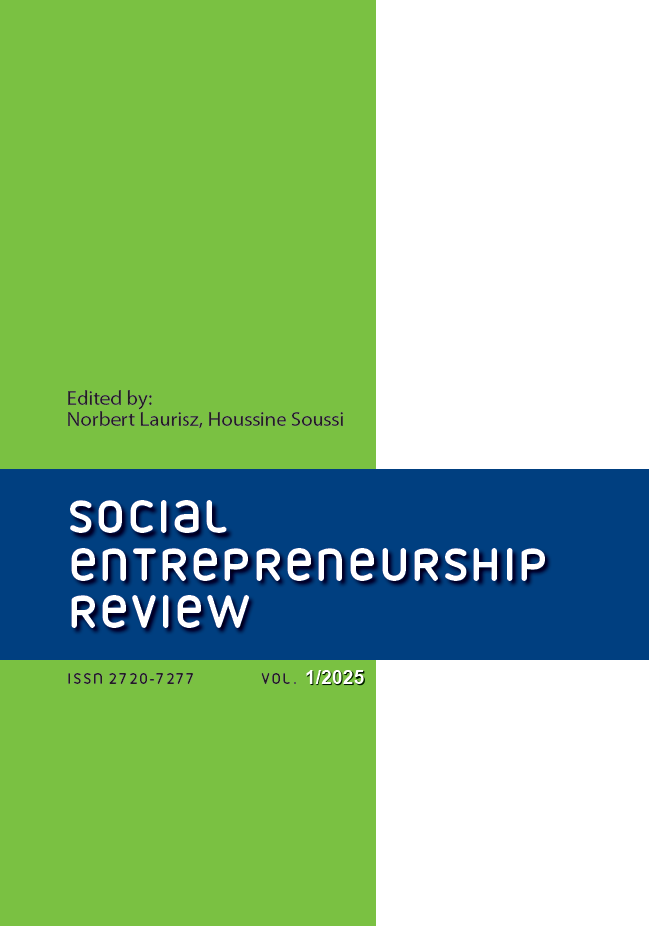Cultural sector as a part of social economy
DOI:
https://doi.org/10.15678/ES.2018.2.06Keywords:
cultural sector, cultural and creative goods and services, social capital, human capital, public goods and servicesAbstract
In the light of the growing awareness of the socio-economic role of culture, the author analyses the available knowledge about the socio-economic potential of culture in the context of social economy. In particular, the article shows that cultural activities produce / have values important from the point of view of the social economy and that culture can fulfil functions attributed to the social economy. Above all, it is about creating jobs, social integration and combating exclusion, building social and human capital, and offering public goods and services. This confirms the thesis that culture can be one of the important areas of social economy.
Downloads
References
Adamiak P., Charycka B., Gumkowska M. (2016). Polskie organizacje pozarządowe 2015. Raport z badań. Warszawa: Stowarzyszenie Klon/Jawor.
Applejuice Consultants (2008). Social Impact of Heritage Lottery Funded Projects. Evaluation Report on Research Conducted for Heritage Lottery Fund during 2006–2007. Heritage Lottery Fund.
Becker G.S., Murphy K.M. (1988). „A Theory of Rational Addiction”, Journal of Political Economy, nr 96(4), s. 675–670.
Bendyk E., Hausner J., Kudłacz M. (2016). „Miasto-idea – nowe podejście do rozwoju miast”, w: J. Buzek, J. Hausner, M. Kudłacz i in. (red.), Open Eyes Book, Open Eyes Economy Summit (s. 119–167). Kraków: Fundacja GAP.
Biuro Badań Społecznych Question Mark (2018). Wpływ projektów infrastrukturalnych z zakresu kultury zrealizowanych w Małopolsce na otoczenie społeczno-gospodarcze. Raport z badań. Kraków: Małopolskie Obserwatorium Rozwoju Regionalnego, Departament Polityki Regionalnej UMWM.
Chojnicki Z. (2008). „Rozwój społeczno-ekonomiczny i jego aspekty aksjologiczne”, w: J. J. Parysek, T. Stryjakiewicz (red.), Region społeczno-ekonomiczny i rozwój regionalny (s. 21–36). Poznań: Bogucki Wydawnictwo Naukowe.
Costantini A. (2018). Social Economy Enterprises and Cultural and Creative Industries: Observations and Best Practices. Bruxelles: Diesis Coop scrl-fs.
Cwi D. (1980). „Public support of the arts: three arguments examined”, Journal of Cultural Economics, nr 4(2), s. 39–62.
Frączak P., Wygnański J.J. (2008). Polski model ekonomii społecznej – rekomendacje dla rozwoju. Warszawa: Fundacja Inicjatyw Społeczno-Ekonomicznych, http://www.ekonomiaspoleczna.pl/files/ekonomiaspoleczna.pl/public/Biblioteka/2008.46.pdf (dostęp: 23.01.2019).
Frey B. (1997). „Evaluating Cultural Property: The Economic Approach”, International Journal of Cultural Property, nr 6(2), s. 231–246.
Goss K. (2001). Better Together. The report of Saguaro Seminar: Civic Engagement in America. Cambride, MA: John F. Kennedy School of Government, Harvard University.
GUS (2018). Rola sektora non-profit w dostarczaniu usług społecznych w latach 2014-2016. Analizy statystyczne. Warszawa: GUS, US w Krakowie, https://stat.gov.pl/download/gfx/portalinformacyjny/pl/defaultaktualnosci/5490/14/1/1/rola_sektora_non-profit_w_dostarczaniu_uslug_w_latach_2014-2016.pdf (dostęp: 18.12.2018).
Hausner J. (2008). „Ekonomia społeczna jako kategoria rozwoju”, w: J. Hausner (red.), Ekonomia społeczna a rozwój (s. 9–25). Kraków: MSAP UEK.
Karwińska A. (2013). „Kulturowe podłoże formowanie się kapitału ludzkiego”, w: J. Hausner, A. Karwińska, J. Purchla (red.), Kultura a rozwój (s. 307–326). Warszawa: Narodowe Centrum Kultury.
Liepe W.D. (1984). „Value and meaning in cultural resources”, w: H. Cleere (red.), Approaches to Archaeological Heritage: A Comparative Study of World (s. 1–11). Cambridge: Cambridge University Press.
Maeer G., Killick T. (2013). Values and Benefits of Heritage: A Research Review. London: Heritage Lottery Fund.
Matarasso F. (1997). Use Or Ornament? Strout: Comedia.
Murzyn-Kupisz M. (2012). „Spojrzenie na wartość obiektów zabytkowych z perspektywy ekonomiki kultury”, w: B. Szmygin (red.), Wartościowanie w ochronie i konserwacji zabytków (s. 135–150). Warszawa-Lublin: Polski Komitet Narodowy ICOMOS, Politechnika Lubelska.
Murzyn-Kupisz M., Działek J. (2013). „Cultural Heritage in Building and Enhancing Social Capital”, Journal of Cultural Heritage Management and Sustainable Development, nr 3(1), s. 35–54, https://doi.org/10.1108/20441261311317392 (dostęp: 18.12.2018).
Oldenburg R. (1989). The Great Good Place: Cafes, Coffee Shops, Community Center, Beauty Parlors, General Stores, Bars, Hangouts, and How They Get You Through the Day. New York: Paragon House.
Pine II B.J., Gilmore J.H. (2011). Experience Economy: Update Edition. Boston, MA: Harvard Business Review Press.
Randall M. (2002). „Assessing Values in Conservation Planning: Methodological Issues and Choices”, w: M. de la Torre (red.), Assessing The Values of Cultural Heritage (s. 5–30). Los Angeles: The Getty Conservation Institute, https://www.getty.edu/conservation/publications_resources/pdf_publications/pdf/assessing.pdf (dostęp: 18.12.2018).
Rosemberg C. i in. (2011). Assessment of the Social Impact of Volunteering in HLF-funded Projects: Yr. 3. BOP Consulting.
Sanetra-Szeliga J., Jagodzińska K. (2017). Potencjał dziedzictwa. Społeczno-gospodarcze przykłady z Europy Środkowej. Kraków: Międzynarodowe Centrum Kultury.
The Allen Consulitng Group (2005). Priceless: The Value of Historic Heritage in Australia. Research Report 2. Sydney: Heritage Chairs and Officials of Australia and New Zealand.
Throsby D. (2006). „Introduction and Overview”, w: V. Ginsburgh, D. Throsby (red.), Handbook of the Economics of Art and Culture. Vol. 1 (s. 3–20). Amsterdam: North-Holland.
Throsby D. (2010). Ekonomia i kultura. Warszawa: Narodowe Centrum Kultury.
Throsby D. (2011). „Ekonomika kultury i polityka kulturalna, co łączy te dziedziny”, w: B. Jung (red.), Ekonomika kultury. Od teorii do praktyki (s. 33–44). Warszawa: Narodowe Centrum Kultury.
Zipsane H. (2006). Local and Regional Development through Heritage Learning. PASCAL Observatory.
Zipsane H. (2011). „The Vision and Illusion of Lifelong Learning Solutions through Untraditional Partnerships”, w: P. Kearns, S. Kling, C. Gunneriusson Wistman (red.), Heritage, Regional Development and Social Cohesion (s. 179–192). Jamtli: Jamtli förlag.






